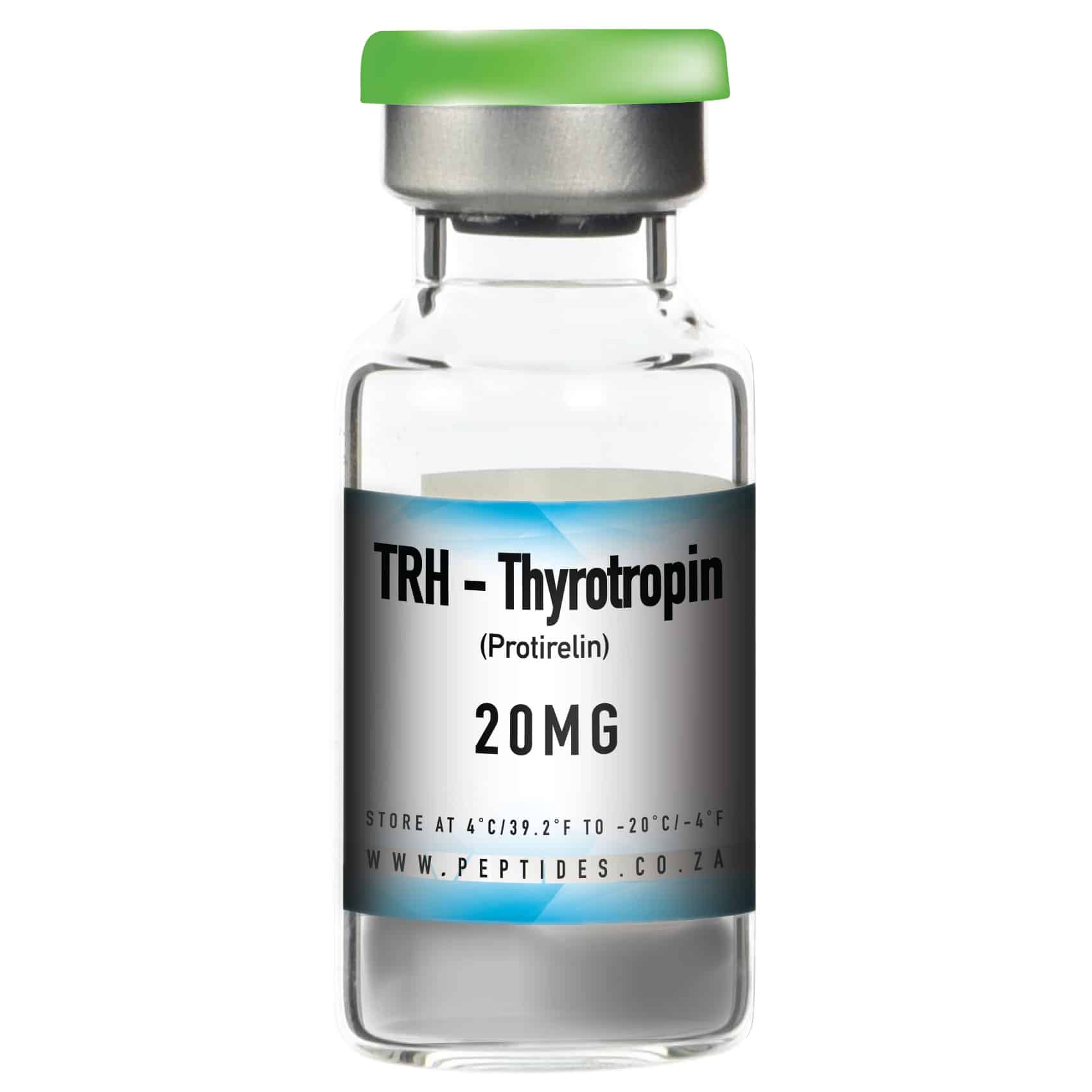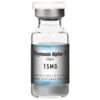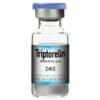Clinical Test Expectation – TRH Thyrotropin Protirelin – Human Subjects : Anti-aging. Aids with energy balance (homeostasis), eating patterns, thermogenesis (heat production), autonomic regulation (the unconscious control of vital bodily functions)
Strength – 20MG per vial
Introduction
Thyrotropin-releasing hormone is one of the smallest hormones in the body, consisting of a miniature chain of just three amino acid building blocks. It is made by a cluster of nerve cells in the hypothalamus, an area at the base of the brain just above the pituitary gland. This nerve cell cluster is known as the paraventricular nucleus. The nerve fibres that come out of it carry the thyrotropin-releasing hormone and release it into the blood surrounding the pituitary gland, where it has its most important action. This is to regulate the formation and secretion of thyroid stimulating hormone in the pituitary gland, which in turn regulates the production of thyroid hormones in the thyroid gland. Thyrotropin-releasing hormone is very short-lived, lasting for a matter of two minutes and travelling less than an inch in the bloodstream to the pituitary gland before it is broken down.
Secretion of thyrotropin-releasing hormone by the hypothalamus can also stimulate the release of another hormone from the pituitary gland, prolactin. Apart from its role in control of thyroid stimulating hormone and prolactin release, thyrotropin-releasing hormone has a wider distribution in tissues of the nervous system where it may act as a neurotransmitter. For instance, an injection of thyrotropin-releasing hormone has effects on the arousal and feeding centres of the brain, causing wakefulness and loss of appetite.
As its name implies, the main effect of thyrotropin-releasing hormone is to stimulate the release of thyrotropin (also known as thyroid stimulating hormone) from the pituitary gland. Thyrotropin-releasing hormone is the master regulator of thyroid gland growth and function (including the secretion of the thyroid hormones thyroxine and triiodothyronine). These hormones control the body’s metabolic rate, heat generation, neuromuscular function and heart rate, among other things. If there is insufficient thyroid hormone available for the brain, this will be detected by the hypothalamus and thyrotropin-releasing hormone will be released into the blood supplying the pituitary gland. The effect of thyrotropin-releasing hormone on the pituitary gland is to trigger thyroid stimulating hormone release, which, in turn stimulates the thyroid gland to make more thyroid hormone. In summary, thyrotropin-releasing hormone is the brain’s first messenger signal in the many actions controlling thyroid hormone secretions.
Thyrotropin-releasing hormone (in its pharmaceutical formulation of ‘protirelin’) was widely used as a drug to test whether someone had thyroid overactivity. However, there are now more sensitive measurements that can detect very low levels of thyroid stimulating hormone in the blood. Thyrotropin-releasing hormone tests are still occasionally carried out but are normally used for the diagnosis of conditions caused by resistance to thyroid hormone action
Dosing Details – TRH Thyrotropin Protirelin
You inject 2ml water into the vial of TRH from the water vial. 1 full syringe is 1ml. You then wait for the vial powder content to dissolve ON ITS OWN. DO NOT SHAKE THE VIAL TO MIX POWDER. Once dissolved and clear in colour you draw out 30 (3 units) on the syringe each night before bed and inject it into the tummy under the skin into the fatty skin layer.
How long will a vial last ?
A vial should last 7 days.
Whatsapp our support team now for help with this item or others ! Click HERE to connect with us !




Reviews
There are no reviews yet.